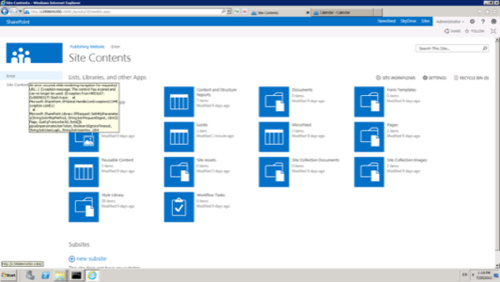
Microsoft continued its embrace of social media by announcing on Monday that it would cut prices for its recent Yammer acquisition and tie the corporate social network closer to its enterprise collaboration tool, SharePoint, both now and through future integration.
At the opening of its SharePoint conference this week, Microsoft said that Yammer can be tied to SharePoint via what the company calls Yammer Web Parts and the new Yammer Open Graph capabilities. But over time, Microsoft plans to invest in unified identity, integrated document management and feed aggregation for both services, possibly turning SharePoint into a “powered by Yammer” application.
Is Social Nothing More Than A Collaboration Tool?
What’s clear, however, is that Microsoft feels that social is simply another tool for collaboration, whether it be in the consumer or enterprise space. Microsoft bought Yammer for $1.2 billion in June, bringing its 5 million corporate users, including employees at 85% of the Fortune 500, into the Microsoft fold. At the time, Microsoft said that it planned to combine Yammer with products like Microsoft SharePoint, Office 365, Microsoft Dynamics and Skype. On Monday, Microsoft said that the SharePoint business has topped $2 billion in annual revenue, and two out of three enterprise workers now have SharePoint.
In a way, Yammer is like a Skype for collaboration, an elemental product that Microsoft can combine with its other business products to form a stronger, more durable alloy. Microsoft lacks a consumer social strategy, preferring to partner with companies like Facebook to provide a social element to search. But in the enterprise, Yammer – along with independent rivals like Jive – might turn out to be one of SharePoint’s structural strengths.
That was reflected in a dramatic change in Yammer’s pricing structure. Microsoft said that it would combine Yammer’s paid services into a single offering, Yammer Enterprise, and cut the price of the service from $15 per user per month to just $3. For Enterprise Agreement customers, the company announced plans to ship Yammer Enterprise with Microsoft SharePoint Online and the Office 365 Enterprise plans with no change in price for existing customers.
Making Office 365 More Valuable
David Sacks, the former chief executive of Yammer and now a corporate vice president at Microsoft, said that the new pricing was designed to bring Yammer into SharePoint – and, perhaps more importantly, into the Office-as-a-Subscription service that is Office 365. Microsoft has discounted Office 365 as a play to get customers to sign up for stable, recurring revenue rather than evaluate each new release and decide whether or not to pay for it.
“This means customers get the best cloud productivity service and the best enterprise social service together – Office 365 plus Yammer,” Sacks said in a statement. “These packaging changes are just a first step into a future where Yammer will power new social experiences across your business applications.”
“We believe in collaboration technologies that we can give to people to help them get work done, to help break down silos and organizations, to help organizations be more effective, to reach out to customers and partners to get business done better than ever before,” said Jared Spataro, senior director of the Office Division at Microsoft, in a SharePoint conference keynote address on Monday. “So at our core it’s the same vision. But we’re very complementary, Sharepoint… came at this more from the documents and sites and applications space, Yammer came at this more from the social conversation space, so there’s a very natural synergy between the two.”
Is There A Wedding Date For The Yammer-Sharepoint Nuptials?
Although Microsoft could save the longer-term collaboration for a new Office release, it’s not entirely clear that it will do so. Spataro said that once Microsoft has its “foundational investments” in place, the company will be “taking advantage of our new, 90-day release cycle for SharePoint Online and Office 365 to add new capabilities that move us toward our vision of connected experiences that combine social, collaboration, email, and unified communications.” That suggests regular point releases to move the pace of integration forward.
Microsoft also made a number of announcements concerning SharePoint, whose 2013 release includes recommendations; fast search; task management across SharePoint, Microsoft Outlook and Microsoft Project; drag and drop (a popular addition, judging by the audience reaction); and saving to the cloud by default, Jeff Teper, a corporate vice president at Microsoft, told the SharePoint conference in a keynote address on Monday.
That, combined with new SharePoint apps for Windows Phone 8, Windows 8, Android and iOS, turns “Office into a Kindle or Netflix environment,” Teper said. “It remembers the documents I’ve read, it remembers the focus; if I’m in PowerPoint, it jumps right to that slide.”
Microsoft also announced new tools for developing apps for Office and SharePoint with Visual Studio 2012 that work with the Napa tools for online development of Office 365 apps, include templates and designers to facilitate app development, and support the LightSwitch HTML client for creation of data-centric business apps in SharePoint 2013, Microsoft said.

















